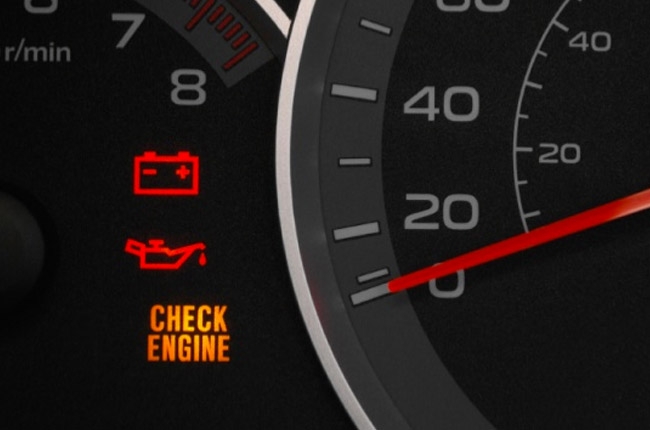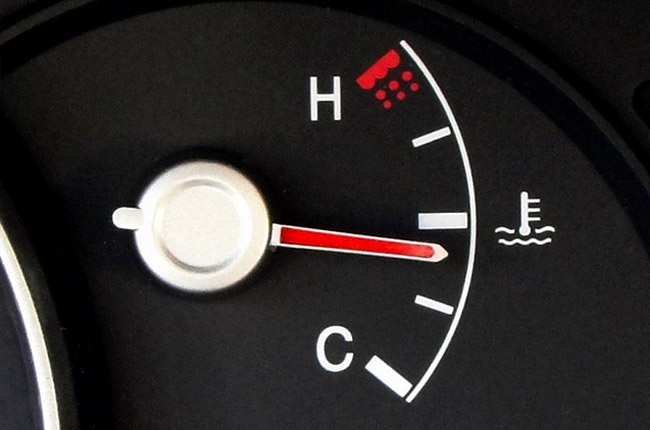
Dashboard warning lights indicate the condition of the vehicle’s systems. Knowing what each warning light means is vital as they can help you spot potential problems or prevent them from getting worse. With this in mind, here are some of those common warning lights and their meanings.

Battery Warning
This light turns on to let you know that the vehicle’s battery is running low on power. In most cases, this signals that you have to buy a new battery. But if the battery is new, yet you still see this light, chances are that the battery’s contact points are dirty or your car’s charging system is faulty. Ask help from a professional technician, immediately.

Check Engine Indicator
Seeing the Check Engine Indicator may result from such things as a busted oxygen sensor, faulty air flow sensor, damaged catalytic converter, loose or damaged fuel cap, or a worn-out spark plug. When you see this light on with a downward-pointing arrow, it means that the engine isn’t receiving enough power to run properly. Have the vehicle checked, immediately.
Diesel Engine Glow Plug Indicator
Within the diesel engine are glow plugs that help it to warm up at low environment temperatures. They also maintain the engine’s low emission and keep it from making too much noise, especially during cold starts. Do note that you need to wait for this light to turn off first before you fully start the engine as this indicates that the glow plugs are heating up to ideal operating temperatures.

Coolant Temperature Warning
This light is triggered by an overheating engine. This can easily be fixed by replenishing the engine coolant or checking the radiator cap if it’s properly secured. But in more serious cases like a damaged cooling system, it’s important to take your vehicle to the nearest service center for repairs.
Transmission Temperature Warning
When the transmission overheats, this light would most likely warn you of it. Inspect the transmission fluid and the engine coolant level. If both are depleted, replenish them. In addition, check for leaks or abnormalities on the transmission fluid line and reservoir or better yet, schedule a service maintenance as soon as possible.
Oil Pressure Warning
The engine oil needs to be pumped properly in order to provide lubrication for moving parts such as the pistons and valves. A decrease in engine oil pressure triggers this light to come on. Check the engine oil level if it has gone low. It’s also advisable to have the engine diagnosed to see if there are damages that may cause sudden loss of oil pressure.

Brake Warning light
If this light remains on, your vehicle’s braking system may have 1 or more problems. This is further explained in AutoDeal’s “Easy ways to tell when you need a brake system change.” In any case, when you see this light, take no time and go to the nearest service center to have it fixed.
High-Beam Light Indicator
In night driving, high-beam headlights are only used for illuminating dimly-lit open roads or alerting drivers ahead of your next move. But you should never use the high-beams for long periods of time, especially on busy roads so as to not blind fellow motorists or pedestrians. This is where the High-Beam Light Indicator comes in handy. It lets you know that your high-beams are on.
Door Ajar Warning Light
This light comes on when the vehicle has 1 or several of its doors open or half-closed. Some models even accompany this light with a beeping sound to urgently signal the driver. Always close the doors properly and lock them up for safety.

Seatbelt Warning Light
Most vehicles today come with this warning light to alert the driver to buckle up. Just like the Door Ajar Warning Light, this indicator remains on until such time the seatbelt is securely fastened. Similarly, some models emit a beeping sound with this light to alert the driver faster.
Dashboard warning lights are there for a reason, and knowing what they mean can save you from more serious problems on the road. Though this short list may help you gain knowledge, it’s still best to read your vehicle’s Owner’s Manual as the function and the amount of warning lights do differ from one vehicle to another.
Latest Features
-
An all-electric future: The Porsche Macan Electric / Featured Article
Porsche’s Macan goes all-electric; it’s a new beast with an electrified heart, yet unmistakably Porsche in performance and spirit.
-
Which Kia should I buy? / Featured Article
We’re here to help you decide which Kia vehicle is best for you, whether it’s a sedan, crossover, or minivan.
-
Why Lynk & Co is a good option for luxury car buyers / Featured Article
Lynk & Co offers premium value for those exploring the luxury market.
Popular Articles
-
Electric Vehicles in the Philippines for under P1 million
Jerome Tresvalles · Aug 19, 2025
-
Top 3 Cars For Every Lifestyle—What Cars Are Right For You? | Behind a Desk
Caco Tirona · Apr 24, 2024
-
5 Tips to Maximize Fuel Efficiency
Jerome Tresvalles · Sep 09, 2024
-
Five driving habits that are draining your fuel tank
Jerome Tresvalles · Jun 24, 2025
-
Can engine braking harm your engine?
Jerome Tresvalles · Sep 11, 2025
-
Do electric cars even need maintenance?
Jerome Tresvalles · Oct 23, 2024
-
Best vehicles for an active outdoor lifestyle
Shaynah Miranda · Jul 25, 2024
-
How to drive different types of vehicle transmissions
May 23, 2024
-
5 easy ways to keep your car interior clean
Allysa Mae Zulueta · Nov 15, 2021
-
How to survive Metro Manila traffic
Earl Lee · Aug 16, 2022



